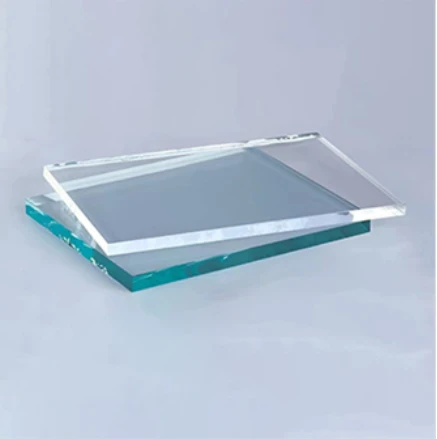Dec . 18, 2024 03:42 Back to list
Leading Float Glass Manufacturers and Their Innovative Solutions for Modern Architecture
The Float Glass Manufacturing Industry An Overview
Float glass, known for its smooth finish and optical clarity, has become a fundamental material in various industries, including construction, automotive, and electronics. The manufacturing process of float glass, along with the associated suppliers and manufacturers, plays a pivotal role in ensuring high-quality production and meeting global demands.
Understanding the Float Glass Process
The float glass process was invented by Sir Alastair Pilkington in the 1950s and involves several key steps. First, raw materials, primarily silica sand, soda ash, and limestone, are mixed and heated to around 1,700 degrees Celsius in a furnace. This high temperature melts the mixture, producing molten glass. The name “float glass” derives from the subsequent step, where the molten glass is poured onto a bed of molten tin. This unique method creates a glass surface that is perfectly flat and free of imperfections.
Once the glass has formed, it can be cooled slowly in a lehr, a tempering furnace that reduces stress and solidifies the glass. After annealing, the glass can be cut into sheets of various sizes, making it ready for transportation to distributors and end-users.
Key Players in the Industry
The float glass manufacturing industry comprises numerous players, from large multinational corporations to smaller specialized manufacturers. Some of the leading global manufacturers include Saint-Gobain, Guardian Industries, PPG Industries, and Asahi Glass Company. These companies have established strong reputations based on reliability, innovation, and quality control.
1. Saint-Gobain Based in France, Saint-Gobain is one of the oldest and largest manufacturers of float glass in the world. They focus on sustainable practices and innovative solutions that cater to the evolving needs of the construction sector.
2. Guardian Industries An American company known for its diverse range of glass products, Guardian has made significant strides in energy-efficient and aesthetically pleasing glass solutions. Their commitment to research and development allows them to stay ahead of trends in the industry.
float glass manufacturers

3. PPG Industries Another significant player, PPG, integrates advanced technology into its float glass manufacturing processes. Their extensive product line caters to various markets, with a strong emphasis on automotive glass.
4. Asahi Glass Company (AGC) This Japanese manufacturer is renowned for producing high-quality flat glass and has expanded its reach globally. AGC has invested heavily in R&D, particularly in environmentally friendly production techniques and smart glass technology.
Challenges and Innovations in Float Glass Manufacturing
Despite its advancements, the float glass industry faces challenges, particularly regarding energy consumption and resource management. The traditional production methods are energy-intensive, leading companies to explore alternative energy sources and more efficient manufacturing techniques.
Innovations such as the development of low-E (low emissivity) glass, which reflects infrared energy while allowing visible light to pass through, are transforming the market. This technology enhances energy efficiency in buildings, making it increasingly popular in the construction industry.
Moreover, the rise of sustainable practices is prompting manufacturers to rethink their processes. This includes recycling used glass, minimizing waste, and reducing carbon emissions, aligning with global sustainability goals.
The Future of Float Glass Manufacturing
As the demand for float glass continues to grow, so does competition in the global market. The industry's future hinges not only on meeting traditional customer needs but also on adapting to emerging trends, such as smart building technologies and renewable energy solutions.
In conclusion, float glass manufacturers play a crucial role in many sectors, providing essential materials that enhance both aesthetic value and functional performance. As the industry evolves, manufacturers are likely to embrace innovation, sustainability, and technological advancements to stay competitive. With ongoing investments in research and development, the float glass industry is poised for a bright future, continuing to meet the demands of a diverse and changing marketplace.
-
Safety and Style with Premium Laminated Glass Solutions
NewsJun.24,2025
-
Reinvents Security with Premium Wired Glass
NewsJun.24,2025
-
Premium Float Glass Line for Modern Architecture
NewsJun.24,2025
-
Low Emissivity Glass for Energy-Efficient Architecture
NewsJun.24,2025
-
High-Performance Insulated Glass Solutions for Modern Architecture
NewsJun.24,2025
-
Elevates Interior Style with Premium Silver Mirror
NewsJun.24,2025
Related PRODUCTS














